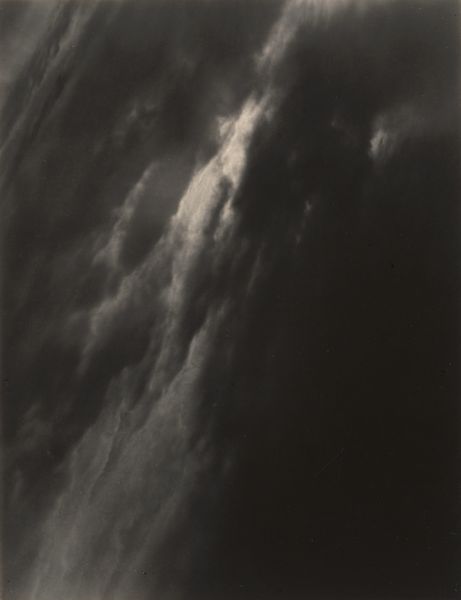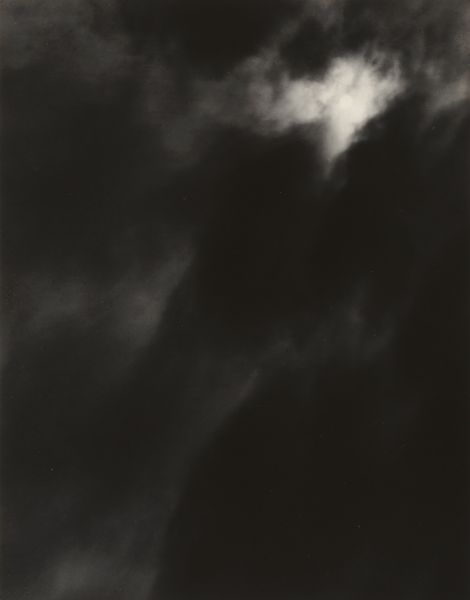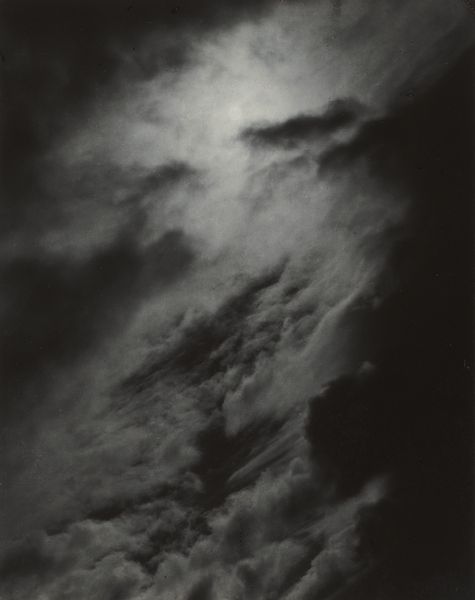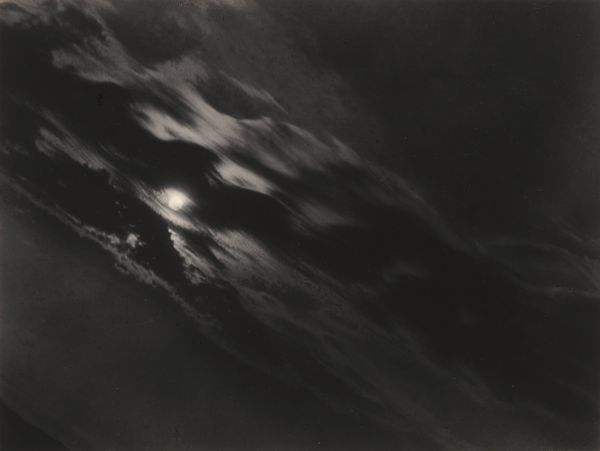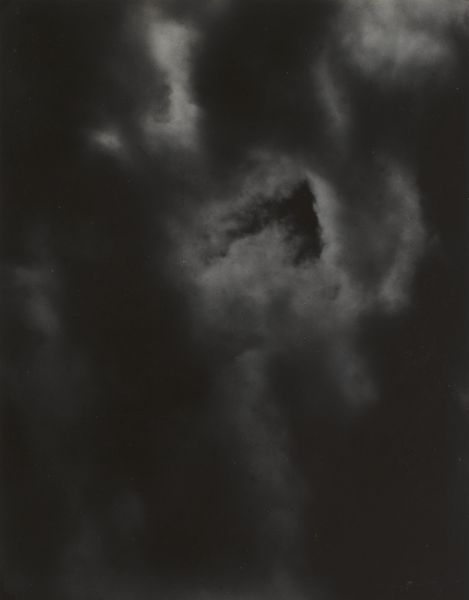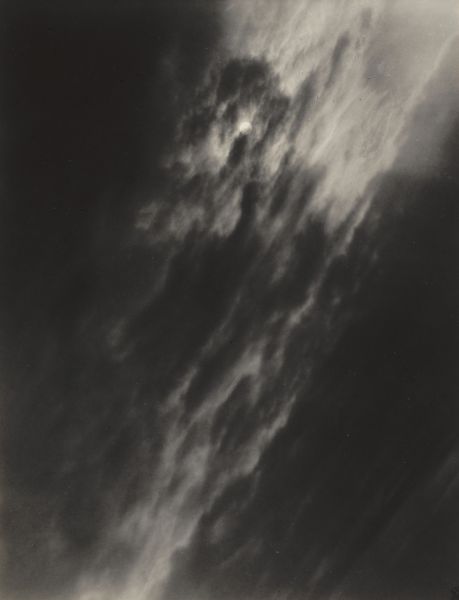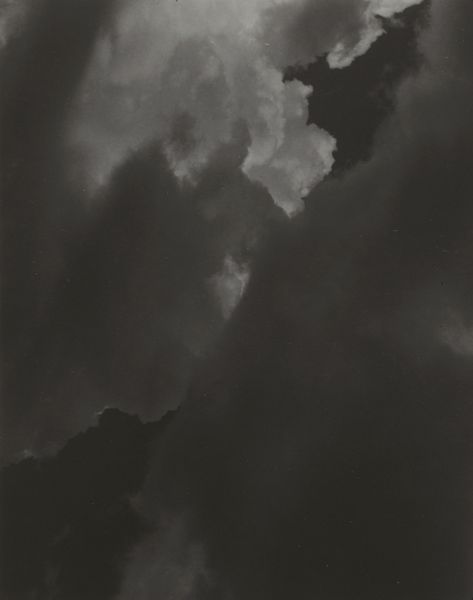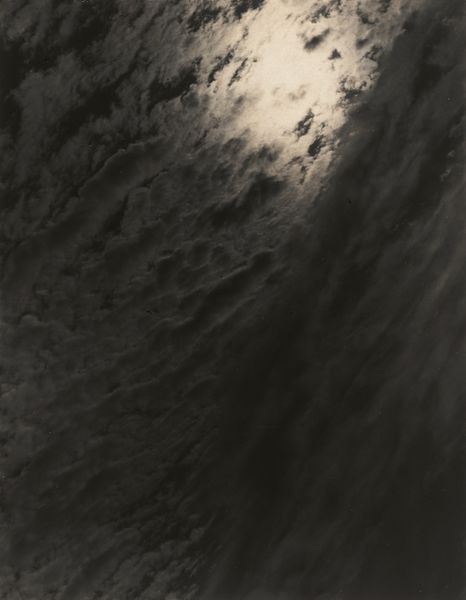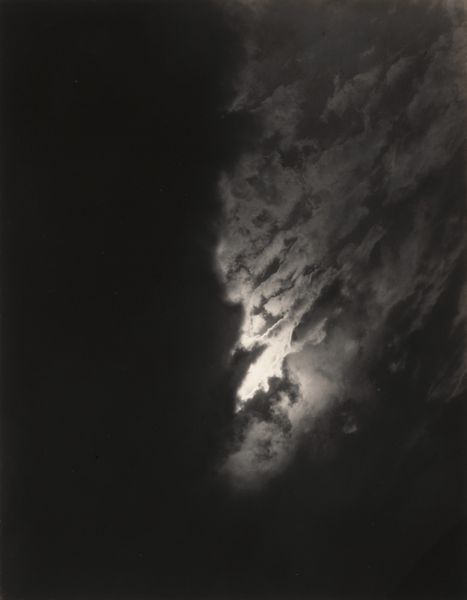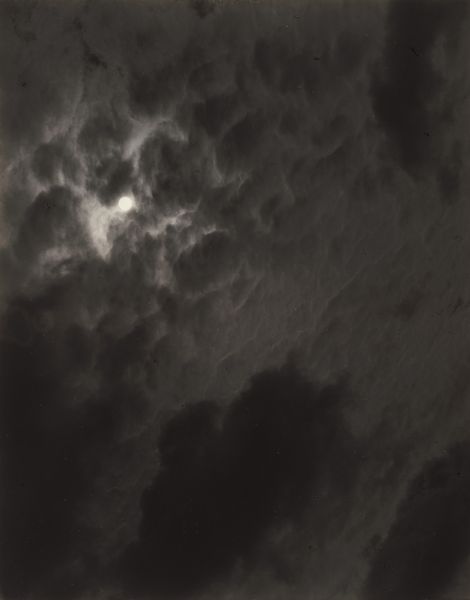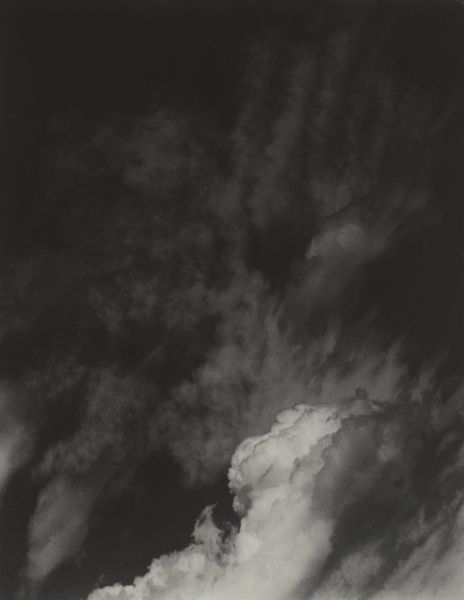
Dimensions: sheet (trimmed to image): 11.5 x 8.9 cm (4 1/2 x 3 1/2 in.) mount: 33.6 x 27 cm (13 1/4 x 10 5/8 in.)
Copyright: National Gallery of Art: CC0 1.0
Curator: Here we have Alfred Stieglitz's "Equivalent," a gelatin-silver print from 1927. Editor: Oh, moody! At first glance, it feels like a brooding sky, all turbulence and shadowed emotion caught in monochrome. Like a whispered secret of nature. Curator: Stieglitz, after turning away from portraits, was focused on capturing clouds as representations of his inner states. What interests me is how photography, then seen as a tool for documentation, becomes here a means of abstracting subjective experience. The making of these prints, and the choices Stieglitz made in the darkroom were an integral element for how the finished photograph finally was made, and ultimately received as an object. Editor: So, it’s less about accurately portraying a landscape and more about...transmuting feeling into form. I love that. You know, looking closer, I see tiny geometric shapes, the clouds have become abstract building blocks, which adds to that sensation of… elemental struggle. Curator: Right, consider also that Stieglitz, moving away from straight photography towards pictorialism and abstract expressionism, questioned the definition of art through the then nascent medium of photography, emphasizing its potential to be as expressive as painting. The print itself, as an artifact of its time, shows how an early photographic process can convey these deeply expressive capabilities. Editor: And I get that it's pushing boundaries. It makes you consider what "landscape" can really mean when it is so intimately intertwined with emotional output. The image is not about capturing, but creating, a mood, which reflects how feelings, thoughts, and processes all create form. I imagine that it also felt particularly modern at the time. Curator: Precisely. The rise of skyscrapers, mechanization, all happening alongside movements in abstract painting contributed towards new understandings of space and form, especially as linked to individual experience of this modernity. The labor and resources going into new urban environments was both mirrored and pushed against by artwork. Editor: Seeing how his art touches on something eternal even when tied to a particular point in time helps bring me back to Earth. I mean, back to clouds! To really notice them above our heads. Thanks for pulling back some clouds and showing us how it does this. Curator: Likewise, looking at this, and then outwards is to experience it anew in this discussion and afterwards. That process alone might shift it into an equivalent all its own.
Comments
No comments
Be the first to comment and join the conversation on the ultimate creative platform.
